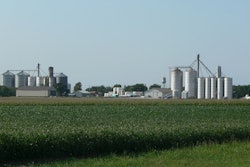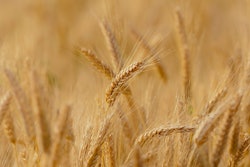
Ethanol Production Slips
Ethanol production in the week ended July 23 declined to 1014 kbd vs 1028 kbd the week prior, 6% higher than last year but 2% below 2019.
Over the last six weeks, ethanol production has run consistently 1.1 - 2.3% below 2019 levels.
The average annualized corn usage increased to 5,085 million bushels for the 2020/21 crop year, compared to the USDA projected 5,050 million.
Ethanol stocks rose again last week to 955 million gallons from 946 million previously.
Since the low in May, ethanol stocks have increased 20%, and are now the highest since mid-February.
There were 11 million gallons of ethanol imported during the reporting period.
FBN’s Take On What It Means: Ethanol production rates are likely to be near 1000 kbd for the balance of the crop year and would result in total corn use of around 5,100 million bushels. However, ethanol stocks continue to rise despite slowing production as we move past peak driving season. If production remains consistent, it will become more likely the USDA will raise its corn usage estimate by 25-50 million bushels.

Brazil Crop Conditions
Parana's state agriculture department, DERAL, has forecast corn production in Brazil to be less than 90 million tonnes, well below 102.5 million last year.
The last CONAB report projected a crop of 93.4 million tonnes, while the USDA has projected 93 million tonnes.
Corn planting was delayed this year and a large area was planted past the ideal date, which exposed the crops to the risk of frost damage.
The first frost in the key corn-growing states of Brazil hit the crops towards the end of June, followed by another round of frost events last week.
CONAB has issued a warning there is the risk of moderate and severe frosts in São Paulo and Paraná for July 29-30.
Corn and wheat in Mato Grosso do Sul could also be hit by frosts, though in fewer areas.
FBN’s Take On What It Means: Brazil’s safrinha corn crop has faced unfavorable weather conditions since the beginning, with excessively dry conditions now followed by frost in several states. For wheat, the expectation is that there will be a small decline in production, increasing dependence on imports from Argentina. Lower corn production will likely result in fewer exports which would push demand to other origins, and especially to the US.
FBN Market Advisory services are offered by FBN BR LLC, dba FBN Brokerage, FBN BR and FBN Market Advisory (NFA ID: 0508695)
The risk of trading futures and options can be substantial and may not be suitable for all investors. Past performance is not necessarily indicative of future results.
This is not an offer or solicitation in any jurisdiction where we are not authorized to do business or where such offer or solicitation would be contrary to the local laws and regulations of that jurisdiction, including, but not limited to, persons residing in Australia and Canada.










